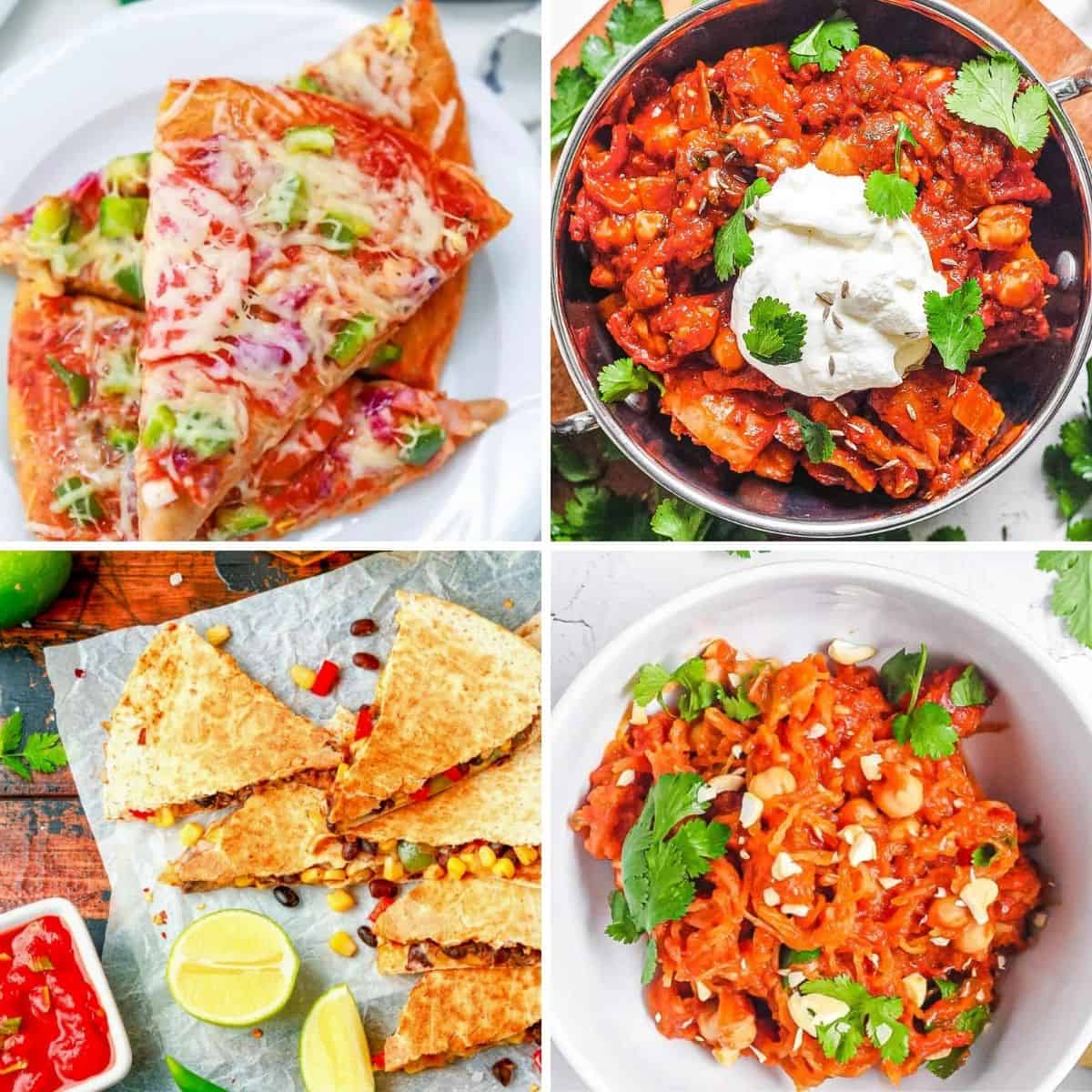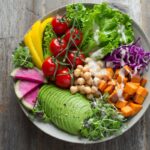Discover a world of delicious and affordable family meals with our guide to budget-friendly flexitarian recipes! Tired of the same old dinner routine and struggling to keep grocery bills down? This comprehensive guide provides a wealth of creative, adaptable recipes that embrace the flexibility of a flexitarian diet, allowing you to easily incorporate more plant-based meals without sacrificing flavor or family satisfaction. Learn to plan your meals strategically, maximize ingredient value, and whip up quick weeknight dinners that are both healthy and budget-friendly.
We’ll walk you through sample meal plans, detailed recipes with step-by-step instructions, and clever tips for repurposing leftovers. From vibrant vegetarian main courses bursting with flavor to simple, nutritious side dishes, this guide offers something for everyone. Whether you’re a seasoned cook or a kitchen novice, you’ll find inspiration and practical strategies to transform your family’s eating habits and save money in the process. Get ready to embark on a culinary adventure that’s both satisfying and sustainable!
Budget-Friendly Meal Planning Strategies
Careful meal planning is the cornerstone of budget-friendly, flexitarian cooking. By strategically selecting recipes and shopping smart, you can significantly reduce food costs and minimize waste, creating delicious and nutritious meals for your family without breaking the bank. This involves understanding seasonal produce, utilizing leftovers creatively, and embracing the versatility of plant-based ingredients.
Sample Weekly Flexitarian Meal Plan for a Family of Four
This plan emphasizes affordability and minimal waste, utilizing leftovers creatively. Portion sizes are estimated for a family of four, but can be easily adjusted.
| Day | Meal | Recipe Notes | Approximate Cost (USD) |
|---|---|---|---|
| Monday | Lentil Soup with Crusty Bread | Use dried lentils for significant cost savings. Leftovers can be used for Tuesday’s lunch. | $5 |
| Tuesday | Lentil Soup (leftovers) & Grilled Cheese Sandwiches | Simple and satisfying lunch utilizing leftover soup. | $3 |
| Tuesday | Sheet Pan Chicken and Veggies | Chicken thighs are more affordable than breasts. Use seasonal vegetables like broccoli or carrots. | $8 |
| Wednesday | Black Bean Burgers on Whole Wheat Buns | Make your own burgers using canned black beans – far cheaper than store-bought. Serve with a simple salad. | $6 |
| Thursday | Pasta with Marinara Sauce and Vegetables | Use a jar of marinara sauce and add in whatever vegetables you have on hand. Add a sprinkle of parmesan cheese if desired. | $4 |
| Friday | Vegetarian Chili | A hearty and budget-friendly meal using canned beans and tomatoes. Serve with cornbread (optional). | $7 |
| Saturday | Homemade Pizza | Use pre-made pizza dough to save time. Load it up with affordable toppings like mushrooms, onions, and peppers. | $9 |
| Sunday | Roast Chicken with Roasted Potatoes and Green Beans | Roast a whole chicken – it’s generally cheaper per pound than buying individual pieces. Use the leftover chicken for salads or sandwiches during the week. | $10 |
Grocery List with Cost-Saving Techniques
Before creating the list, consider these cost-saving techniques:
* Buy in bulk: Dried beans, lentils, rice, and grains are significantly cheaper when purchased in larger quantities.
* Seasonal produce: Choose fruits and vegetables that are in season; they’ll be cheaper and tastier.
* Shop sales and use coupons: Check weekly flyers for deals and use any coupons you may have.
* Plan meals around sales: Build your meal plan around what’s on sale that week.
The following is a sample grocery list based on the meal plan above. Prices are estimates and will vary depending on your location and store.
- Dried lentils (1 lb): $2
- Crusty bread: $3
- Chicken thighs (2 lbs): $6
- Broccoli or carrots: $3
- Canned black beans (2 cans): $2
- Whole wheat buns: $3
- Pasta: $2
- Jar of marinara sauce: $3
- Canned diced tomatoes: $2
- Canned kidney beans: $2
- Onions, peppers, mushrooms: $5
- Pre-made pizza dough: $4
- Potatoes (2 lbs): $3
- Green beans (1 lb): $2
- Whole chicken (1): $8
Tips for Stretching Ingredients and Minimizing Food Waste
Effective ingredient stretching significantly impacts budget and reduces waste.
- Embrace leftovers creatively: Transform leftover roasted chicken into salads, soups, or sandwiches. Leftover cooked vegetables can be added to omelets, frittatas, or pasta dishes. Don’t be afraid to experiment!
- Use vegetable scraps wisely: Vegetable scraps (onion peels, carrot tops, celery ends) can be used to make flavorful vegetable broth. Freeze scraps until you have enough to make a batch.
- Plan for portion control and storage: Cook only what you need and store leftovers properly to maximize freshness and minimize spoilage. Use airtight containers and label them with the date.
Budget-Conscious Flexitarian Side Dishes
Stretching your food budget doesn’t mean sacrificing flavor or nutrition. These budget-friendly flexitarian side dishes are quick to prepare, bursting with flavor, and perfect for complementing a variety of vegetarian main courses. They also offer opportunities to creatively use up leftover ingredients, minimizing food waste and maximizing your culinary investment.
Five Budget-Friendly Flexitarian Side Dish Recipes
These recipes showcase the versatility of affordable ingredients and emphasize ease of preparation, making them ideal for busy weeknights.
- Roasted Root Vegetables with Herbs: Toss chopped carrots, parsnips, and sweet potatoes with olive oil, salt, pepper, and your favorite herbs (rosemary and thyme work wonderfully). Roast at 400°F (200°C) for 20-25 minutes, until tender and slightly caramelized. The vibrant colors of the roasted vegetables, ranging from the deep orange of the sweet potatoes to the pale yellow of the parsnips and the deep orange of the carrots, create a visually appealing dish. The earthy aroma of the herbs blends beautifully with the sweetness of the roasted vegetables, creating a symphony of flavors and textures.
- Garlic and Herb Sautéed Greens: Quickly sauté a mix of leafy greens like spinach, kale, or chard with minced garlic, olive oil, and a pinch of salt and pepper. The vibrant green color of the greens contrasts beautifully with the pale green of the garlic, creating a fresh and visually appealing dish. The garlic adds a pungent aroma and flavor that complements the slightly bitter taste of the greens, resulting in a balanced and savory dish. A squeeze of lemon juice at the end brightens the flavors.
- Simple Quinoa Salad: Cook quinoa according to package directions. Fluff with a fork and toss with chopped cucumber, tomatoes, red onion, and a lemon vinaigrette. The fluffy texture of the quinoa contrasts with the crispness of the cucumber and tomato, creating an interesting textural experience. The bright colors of the vegetables and the creamy texture of the quinoa create a visually appealing salad. This is a highly adaptable recipe; add chickpeas or black beans for extra protein.
- Lemony Green Beans with Toasted Almonds: Steam or blanch green beans until tender-crisp. Toss with olive oil, lemon juice, salt, pepper, and toasted slivered almonds. The bright green of the beans is complemented by the light brown of the toasted almonds, creating a visually appealing dish. The slight bitterness of the green beans is balanced by the tartness of the lemon juice and the crunchiness of the almonds, resulting in a delightful combination of flavors and textures.
- Creamy Mashed Sweet Potatoes: Boil or steam sweet potatoes until tender. Mash with a little milk or cream (or even water for a lighter version), butter (optional), salt, and pepper. The smooth, creamy texture of the mashed sweet potatoes is a comforting contrast to many other dishes. The rich orange color of the sweet potatoes is visually appealing and suggests their inherent sweetness. A sprinkle of cinnamon adds warmth and depth.
Nutritional Comparison: Roasted Root Vegetables vs. Simple Quinoa Salad
Roasted root vegetables and the simple quinoa salad both offer valuable nutritional benefits, but their vitamin and mineral profiles differ.
Roasted root vegetables, particularly sweet potatoes, are excellent sources of Vitamin A (in the form of beta-carotene), Vitamin C, and potassium. The vibrant colors of these vegetables are an indication of their high antioxidant content. Quinoa, on the other hand, is a complete protein, meaning it contains all nine essential amino acids. It’s also a good source of fiber, magnesium, and iron. The combination of quinoa with the vegetables in the salad provides a well-rounded nutritional profile, including a variety of vitamins and minerals.
Incorporating Leftover Ingredients to Reduce Food Waste
Leftover roasted vegetables from a main course can be added to the quinoa salad for extra flavor and texture. Similarly, leftover cooked grains or beans from a vegetarian chili can be incorporated into the simple quinoa salad, increasing its protein content and reducing waste. Wilted greens from a salad can be easily incorporated into the garlic and herb sautéed greens, adding an extra layer of flavor and nutrition. Leftover cooked sweet potatoes can be added to the mashed sweet potatoes recipe to create a larger serving size without requiring extra effort. These strategies demonstrate how creative repurposing of leftovers contributes to both culinary resourcefulness and environmental sustainability.
Making the Most of Leftovers

Transforming yesterday’s dinner into today’s delightful meal is not only economical but also a fantastic way to reduce food waste and add exciting variety to your flexitarian diet. Repurposing leftovers allows for creative culinary adventures, utilizing existing ingredients to craft entirely new dishes, minimizing effort and maximizing flavor. This section explores simple yet effective strategies for maximizing your culinary resources and minimizing food waste.
Flexitarian Leftover Transformations
The following examples demonstrate how to creatively repurpose leftovers from common budget-friendly flexitarian recipes into new meals and snacks. Each example focuses on easy adaptations, requiring minimal additional ingredients and effort.
Example 1: Lentil Soup to Lentil Shepherd’s Pie Topping
Imagine a hearty lentil soup, brimming with vibrant vegetables and tender lentils, simmered to perfection. Leftover lentil soup provides a fantastic base for a unique shepherd’s pie topping. Simply thicken the soup slightly by simmering uncovered for a few minutes to reduce the liquid. Then, spread this flavorful lentil mixture over a bed of mashed sweet potatoes or cauliflower mash for a lighter, vegetarian twist on a classic comfort food. The earthy lentils, combined with the sweetness of the mash, create a satisfying and nutritious meal.
| Original Recipe | Leftover Ingredients | Repurposed Recipe |
|---|---|---|
| Hearty Lentil Soup (with carrots, celery, onions, lentils, vegetable broth) | Leftover Lentil Soup | Lentil Shepherd’s Pie Topping (using leftover soup as topping over mashed sweet potatoes) |
Example 2: Roasted Vegetable Quinoa Bowl to Quick Vegetable Fritters
Picture a colorful quinoa bowl, bursting with roasted vegetables like broccoli, bell peppers, and zucchini, tossed in a lemon-herb vinaigrette. Leftover roasted vegetables can be transformed into delicious and crispy vegetable fritters. Simply combine the leftover roasted vegetables with a small amount of chickpea flour, a binding agent, and some spices. Form small patties, pan-fry until golden brown, and serve as a satisfying snack or a light lunch alongside a dollop of plain yogurt or a fresh salsa. The vibrant colors and textures create an appealing and healthy option.
| Original Recipe | Leftover Ingredients | Repurposed Recipe |
|---|---|---|
| Roasted Vegetable Quinoa Bowl (with broccoli, bell peppers, zucchini, quinoa, lemon-herb vinaigrette) | Leftover Roasted Vegetables | Vegetable Fritters (using leftover roasted vegetables with chickpea flour as a binder) |
Example 3: Black Bean Burgers to Black Bean Salsa
Envision juicy black bean burgers, packed with flavor and satisfying texture. Leftover black bean burgers can be easily repurposed into a vibrant and refreshing black bean salsa. Simply crumble the cooled burgers and combine them with finely diced red onion, cilantro, lime juice, and a touch of jalapeño for a spicy kick. This zesty salsa can be enjoyed as a snack with tortilla chips, used as a topping for grilled chicken or fish, or served as a vibrant side dish to complement your next meal. The bold flavors and contrasting textures create a dynamic culinary experience.
| Original Recipe | Leftover Ingredients | Repurposed Recipe |
|---|---|---|
| Black Bean Burgers (with black beans, breadcrumbs, spices) | Leftover Black Bean Burgers | Black Bean Salsa (using crumbled leftover burgers with red onion, cilantro, lime juice, and jalapeño) |
Embracing a flexitarian approach to family meals doesn’t have to mean sacrificing taste or breaking the bank. This guide has equipped you with the tools and recipes to create a diverse range of delicious and affordable meals that cater to everyone’s preferences. From strategic meal planning and cost-saving grocery shopping techniques to quick weeknight dinners and creative ways to use leftovers, we’ve covered it all. Remember, the key is flexibility and creativity – experiment with different flavors and ingredients, and most importantly, enjoy the process of creating nourishing and satisfying meals for your family.
Popular Questions
What exactly is a flexitarian diet?
A flexitarian diet is primarily vegetarian but occasionally includes meat, poultry, or fish. It’s a flexible approach to eating more plants while still enjoying animal products occasionally.
How can I adapt recipes for different allergies or intolerances?
Many recipes can be easily adapted. For example, substitute gluten-free flour for wheat flour, use dairy-free alternatives for milk and cheese, and be mindful of potential cross-contamination when preparing meals for those with allergies.
How do I store leftovers properly to prevent food waste?
Properly cool leftovers quickly, then store them in airtight containers in the refrigerator. Consume within 3-4 days. Freeze for longer storage.
What are some good sources for buying affordable produce?
Farmers’ markets, local grocery stores with sales, and buying in season are excellent ways to save money on produce. Consider frozen fruits and vegetables as well – they’re often just as nutritious and more affordable.


